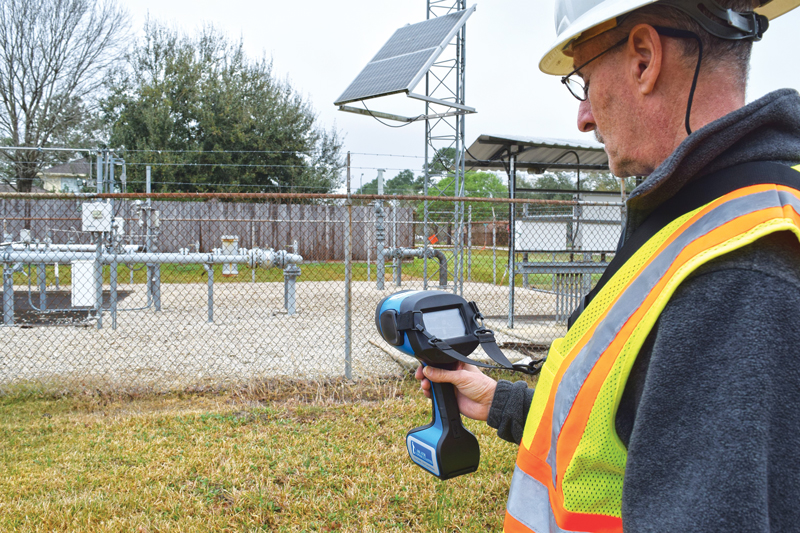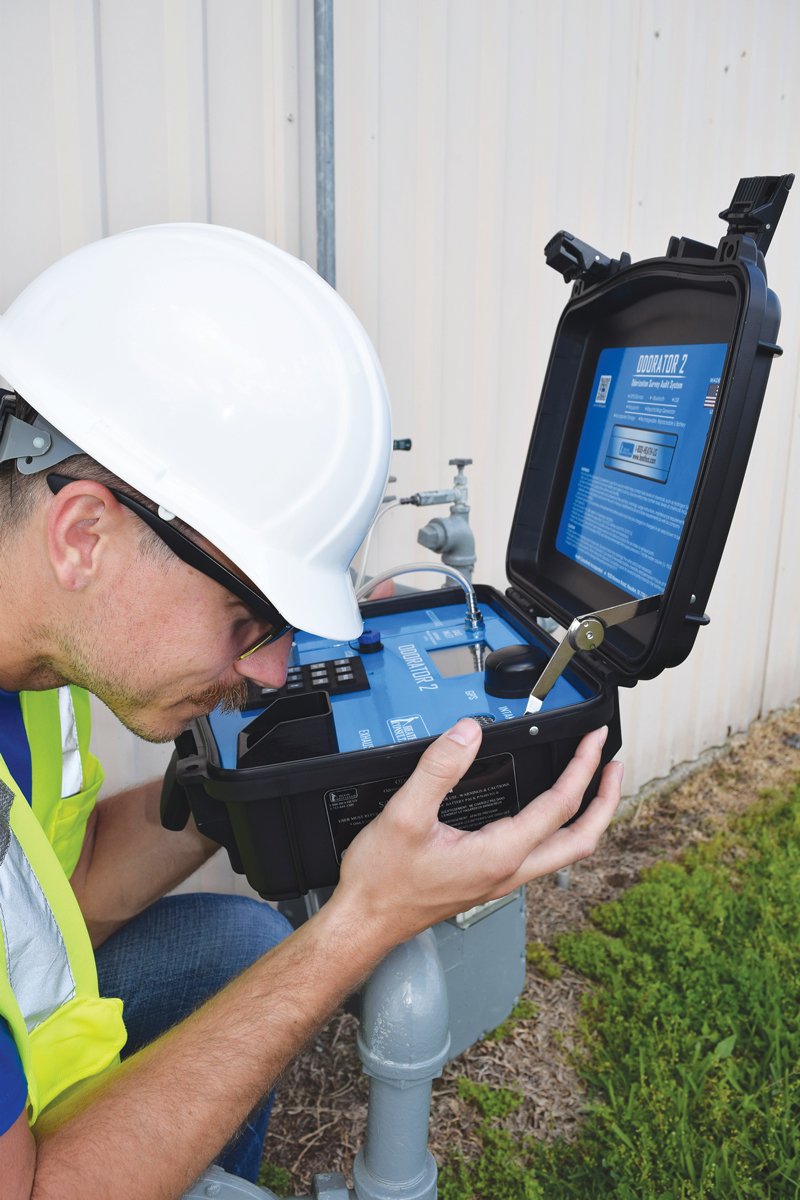September 2020 Vol. 75 No. 9
First Look
First Look: Heath Offers Advanced Detection Products
Jeff Griffin | Contributing Editor
Heath Consultants now offers two advanced technology products for detecting and documenting the presence of methane gas: the RMLD-CS™ remote gas leak detector and the Odorator 2™ audit system. Each replaces proven legacy products.
Both products are available now through Heath Consultants’ worldwide dealer organization. In addition, Odorator 2 is sold directly to utility providers.
RMLD-CS Remote Gas Leak Detector
The RMLD-CS is an ergonomic, lightweight handheld point-and-shoot laser leak detector, said Paul D. Wehnert, Heath Consultants executive vice president/chief marketing officer. “It replaces the legacy RMLD-IS that was much heavier with two components joined by a cable.
“The RMLD-CS detects leaks in a variety of operating conditions and can safely make surveys in hard-to-access areas such as busy roadways and yards with dogs.”
It is ideally suited for locating leaks in underground pipes. To check for gas leaks inside a building, the laser is directed through a glass window.
“The RMLD-CS utilizes field-proven, TDLAS (tunable diode laser absorption spectroscopy) technology,” said Wehnert. “The laser penetrates a plume of natural gas and reflects back from a building, roadway, grass, piping, bushes, shrubs or other surface. Part of the laser light is absorbed and converted into a parts per million methane concentration reading.”
Features include:
- Graphical user interface
- Ergonomic, lightweight housing
- Internal data logging
- GPS
- Color camera and display
- Mobile app support
- Rechargeable and replaceable battery
- Dual-battery charger
Odorator 2 Odorization Survey Audit System
The Heath Odorator 2 offers the latest state of-the-art technology for documenting odor intensity in a handheld, portable, GNSS-based odor audit system. The instrument is used to evaluate and record odor levels within a utility’s gas stream with respect to actual test locations. Natural gas (methane) and propane are the two common gases typically odorized and distributed for consumption.
Correctly used, Odorator 2 fulfills Department of Transportation Code 192.625 requirements.
Like GPS, GNSS (global navigation satellite system) uses satellites to pinpoint locations on the earth.
“The primary difference between GPS and GNSS,” said Wehnert, “is that GNSS-compatible equipment can use navigational satellites from other networks beyond the GPS system and more satellites means increased receiver accuracy and reliability.”
OdorSeer and OdorSeer Remote are advanced PC software programs which are a key part of the Odorator 2 Odorization Survey Audit System. OdorSeer supports custom configuration of the instrument and via its database provides powerful readings mapping, data analysis and reporting tools.
All odor level readings stored in the OdorSeer database are automatically corrected for accuracy, linearity, actual pressure and actual temperature in the instrument. OdorSeer Remote supports remote configuration and data access.
Information can be loaded into Google Maps, Bing Maps or GIS to validate odorant zones within a distribution network.
Additional features of the Odorator 2 include:
- Certified to Class 1, Division 2 for safe use in hazardous locations
- Rugged design, reliable, and easy to use
- One touch zero with flow check
- Automatic recording of all readings and locations
- Automatic reading correction (linearity, elevation, pressure and temperature)
- USB 2 connectivity
- Ease of integration with corporate GIS and asset management systems
- Replaceable, rechargeable lithium-ion battery pack for long run-time
“Odorant level testing is critical to validate that natural gas has the appropriate smell/odorant concentration so that every person in a given city/community can smell a leak and prevent loss of life and property,” Wehnert said. •
FOR MORE INFORMATION:
Heath Consultant, (713) 844-1300, heathus.com






Comments